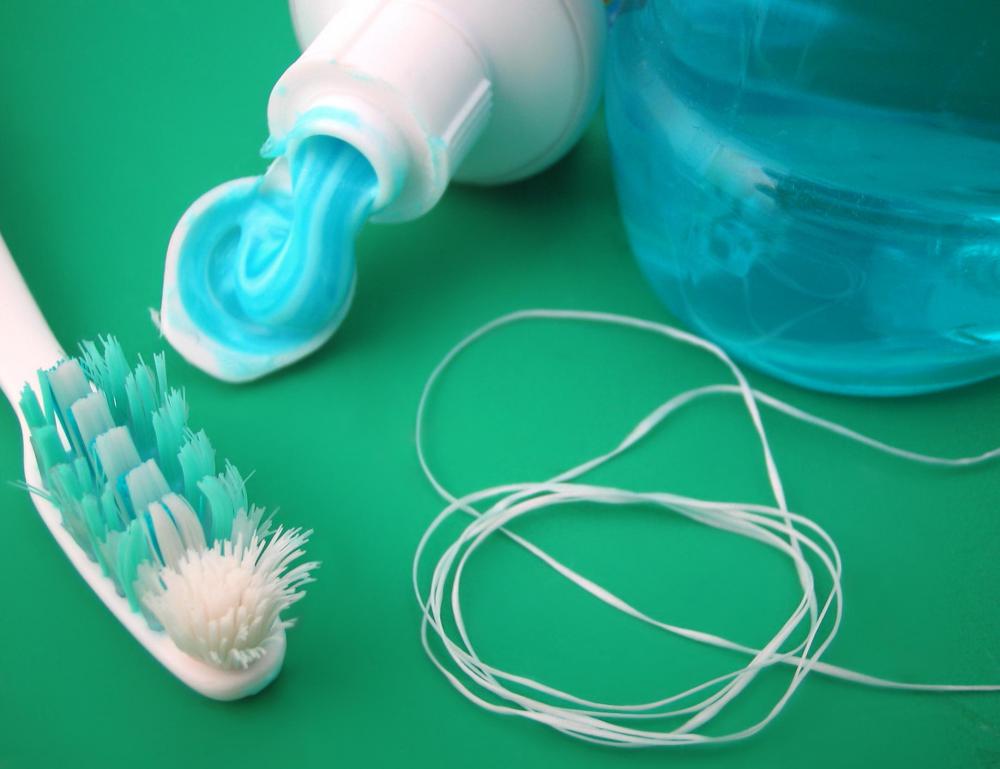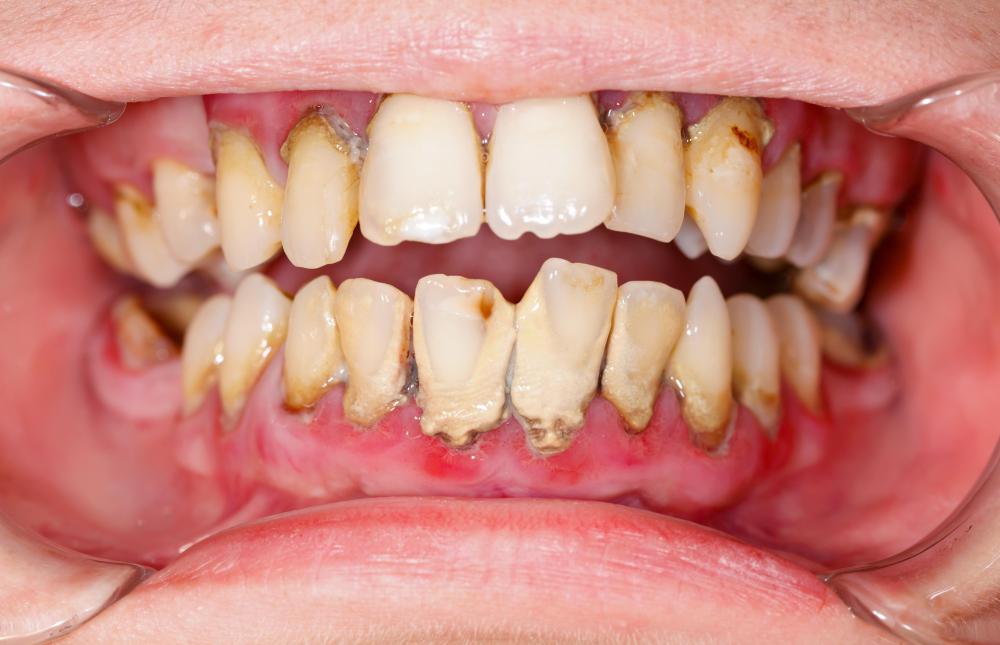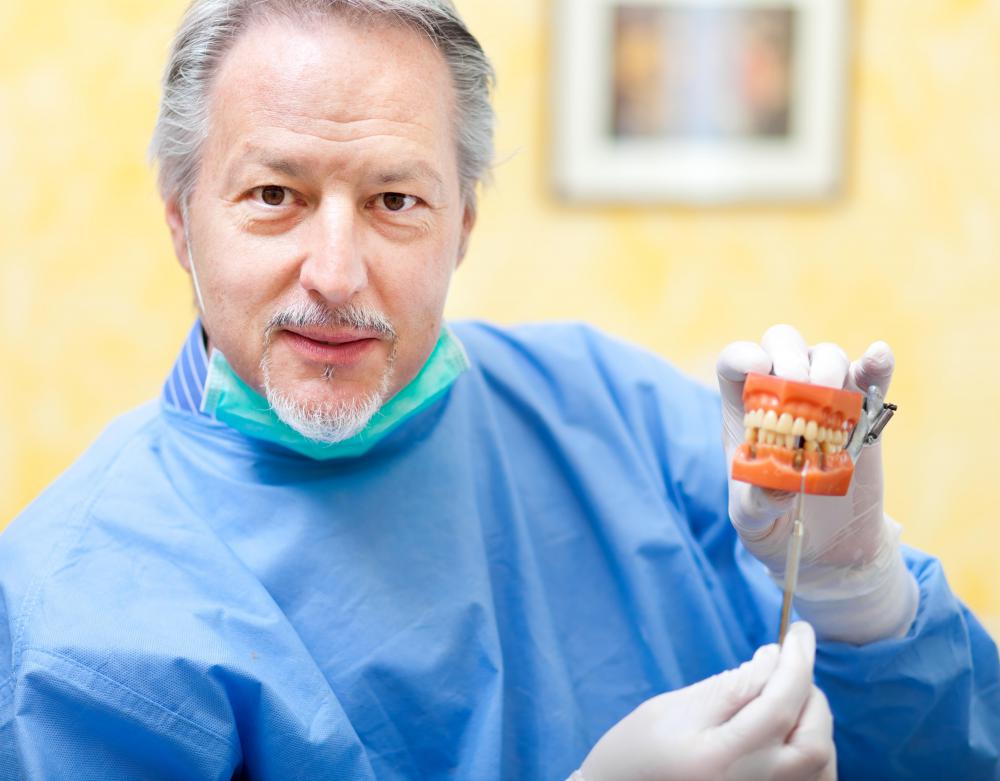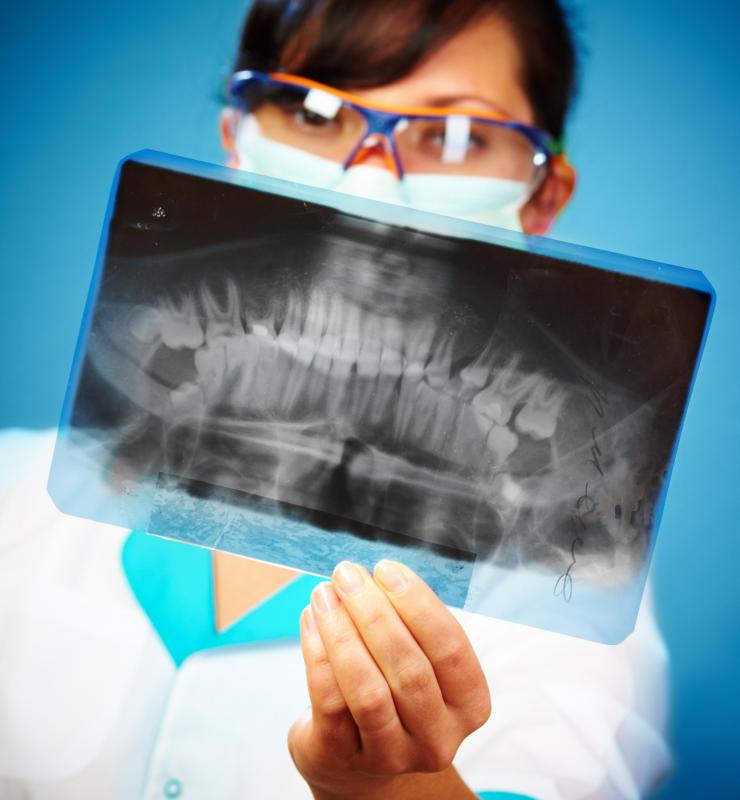At TheHealthBoard, we're committed to delivering accurate, trustworthy information. Our expert-authored content is rigorously fact-checked and sourced from credible authorities. Discover how we uphold the highest standards in providing you with reliable knowledge.
What Is a Dental Explorer?
A dental explorer is an oral healthcare instrument that a dentist uses during a clinical examination of a patient. This type of tool features a sharp, pointed end and is used to find soft spots or holes in the teeth caused by decay. Various versions of this instrument are helpful for detecting problems on different areas of a tooth. In addition, explorers enable dentists to find hard food deposits underneath the gum, which can cause health problems.
The dental explorer comes in a relatively simple shape. It has a long, skinny handle that usually features a rough area toward the top to make it easier to grip. In addition, the explorer features a thin-curved head with a very sharp point at the end. This point is designed to increase the ability of a dental professional to use tactile sensation to identify physical problems in the mouth.

A main purpose of this type of healthcare instrument is to detect the presence of a cavity — an area of a tooth in which decay has occurred due to the presence of plaque, or soft food deposits that have not been removed by brushing. Acid forms inside this layer of debris and eats away at the surface of an individual’s tooth, forming a hole called a cavity. The dental explorer is considered an examination instrument and thus typically is included with a mouth and a periodontal probe — an item used to measure the depth of gum pockets around teeth — on a basic dental tray setup.

Multiple versions of these tools are available for use as well. For instance, the sickle probe, also known as a shepherd’s hook explorer or No. 23 explorer, constitutes the most common type of dental explorer. It is most effective for finding areas of decay on the chewing surfaces of teeth or on the parts of teeth that face the tongue or cheek. In addition, other explorers have heads that are shaped like the tails of pigs or even horns on cows. These specialized instruments are helpful for detecting cavities between teeth.

Explorer instruments also are helpful for determining the health of the area of a tooth between the roots, which are embedded in bone. A dentist probes this area, called the furcation area, using a dental explorer simply by inserting the instrument underneath the gum line. His or her goal is to see if any tartar, which is the hardened version of plaque, is present there. Tartar causes the gums around the teeth to become inflamed and the bone to resorb, thus making the teeth loose.
AS FEATURED ON:
AS FEATURED ON:



















Discuss this Article
Post your comments